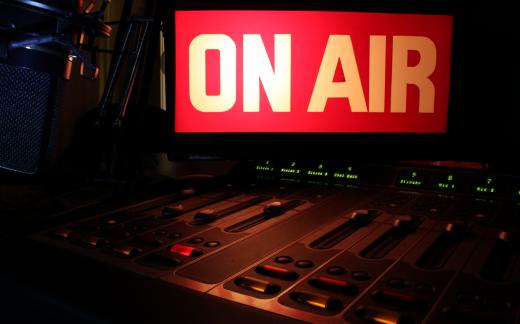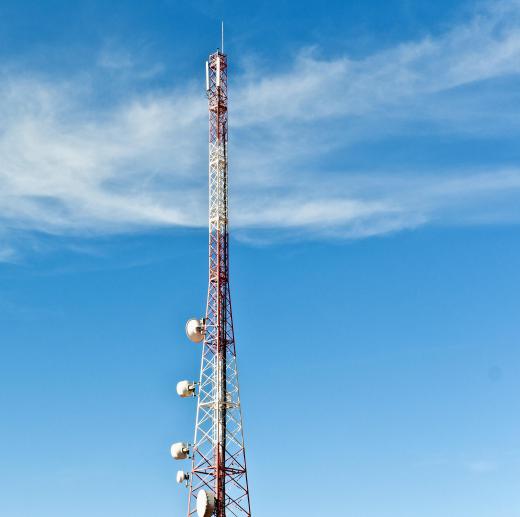What is the Difference Between a Transmitter and Receiver? (original) (raw)
Simply put, the main difference between a transmitter and a receiver is that a transmitter gathers and decodes information and the receiver displays the information in an audible and/or visual form that consumers can view or listen to. The most well-known and oldest of inventions to use this system is the radio. Towers send radio waves through the air. These waves are picked up by transmitters and then converted into music by the radio receiver.
In many devices which implement radio electronics technology, the transmitter and receiver work together to emit both sound and visuals to consumers. The transmitter generally is composed of an oscillator, a modulator, and separate amplifiers for both radio and audio frequencies. This allows the device to transmit both audible and visual waves. In most areas, the use of transmitters is regulated because improper use could result in dangerous crossing of signals. For example, a crossed signal could interfere with emergency communications.

A receiver generally receives information from a transmitter through an antenna. At that time, it usually separates the signal being given by the transmitter from all other signals coming through the antenna. The sound is then amplified and decoded into a sound that users can understand.
Traditional transmitter and receiver technologies used analog signals to allow consumers to hear music on the radio and both listen to sounds and watch visuals on the television. Today, digital technology is replacing more outdated devices with better and clearer sounds and images. In order for digital signals to be received, however, consumers must own a digital transmitter and receiver or a device which has them.

There are some devices that have a transmitter and receiver all in one unit. In these cases, the combined unit is called a transceiver. These are generally used in devices such as phones where the user receives and sends audio signals at the same time.
When choosing electronics, it is important to pick items that have receivers designed for the signals one hopes to listen to or watch. For instance, a digital receiver will often not read an analog signal and vice versa. Specialize converter boxes can be purchased to convert a receiver into the correct kind for the signal being used. This is especially important now that many television stations are required by law to feature all digital programming, because many consumers own televisions with outdated analog receivers.
EasyTechJunkie is dedicated to providing accurate and trustworthy information. We carefully select reputable sources and employ a rigorous fact-checking process to maintain the highest standards. To learn more about our commitment to accuracy, read our editorial process.